In pictures: Ecology photo prize winners
- Published
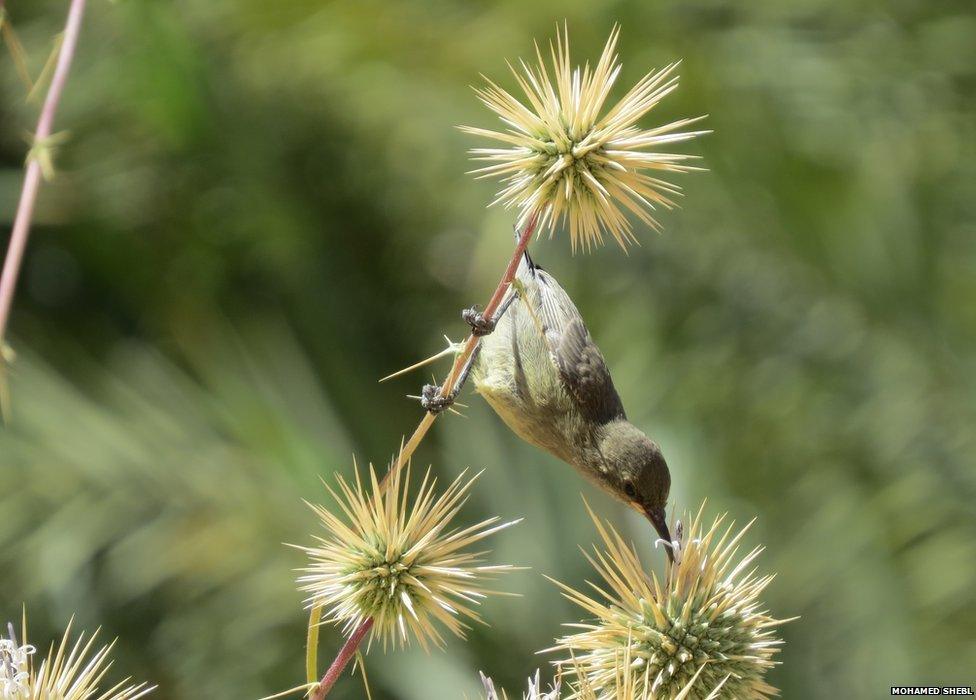
The journal BMC Ecology has announced the winners of its 2015 image competition. This photo, showing a Palestinian sunbird taking a delicate drink from a thistle, was the overall winner. It was taken by Mohamed Shebl from Suez Canal University in Egypt, who spent two days photographing the sunbirds in Saudi Arabia.
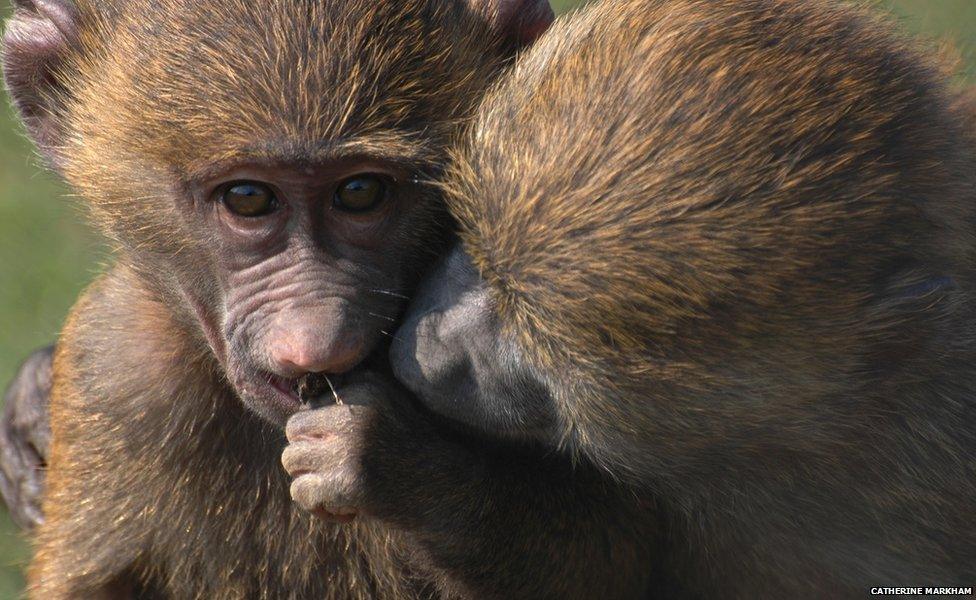
This image was the "editor's pick". Taken by Catherine Markham, it shows a juvenile baboon making a very close inspection of the food being eaten by its companion.
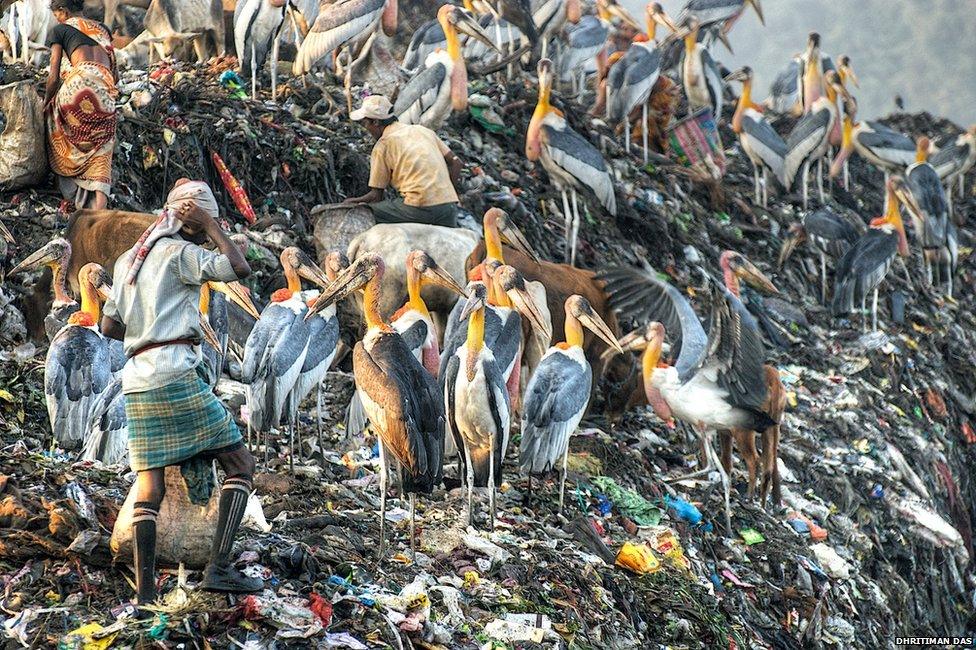
Dhritiman Das's photo of storks foraging in a dump was joint overall runner-up. The greater adjutant stork is the world's most endangered stork. The world's largest concentration of the birds is found in the urban garbage dumps of Guwahati City in India, because of the destruction of surrounding wetlands.
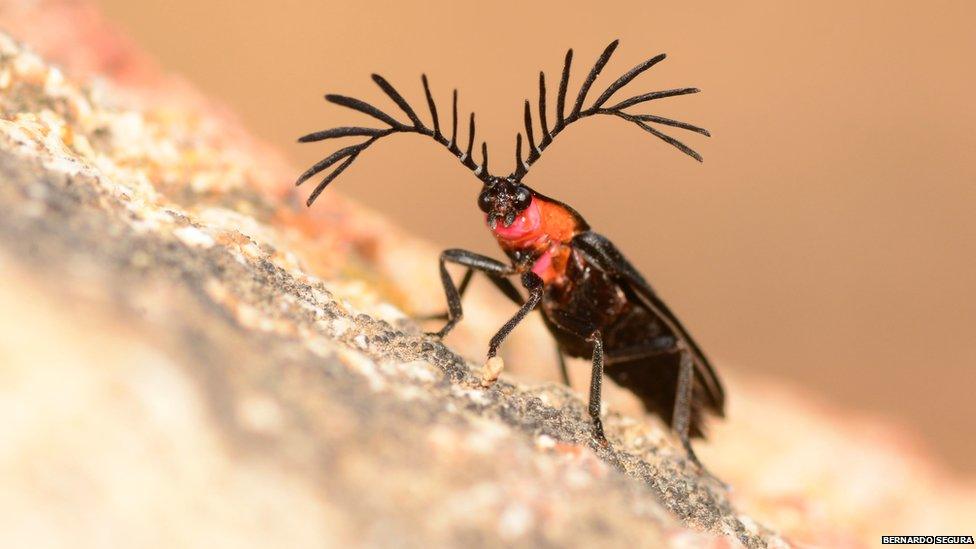
This lampyridae beetle in Chile is waving its impressive antennae to try and sniff out a female. It won the "behaviour and physiological ecology" category. (Photo: Bernardo Segura)
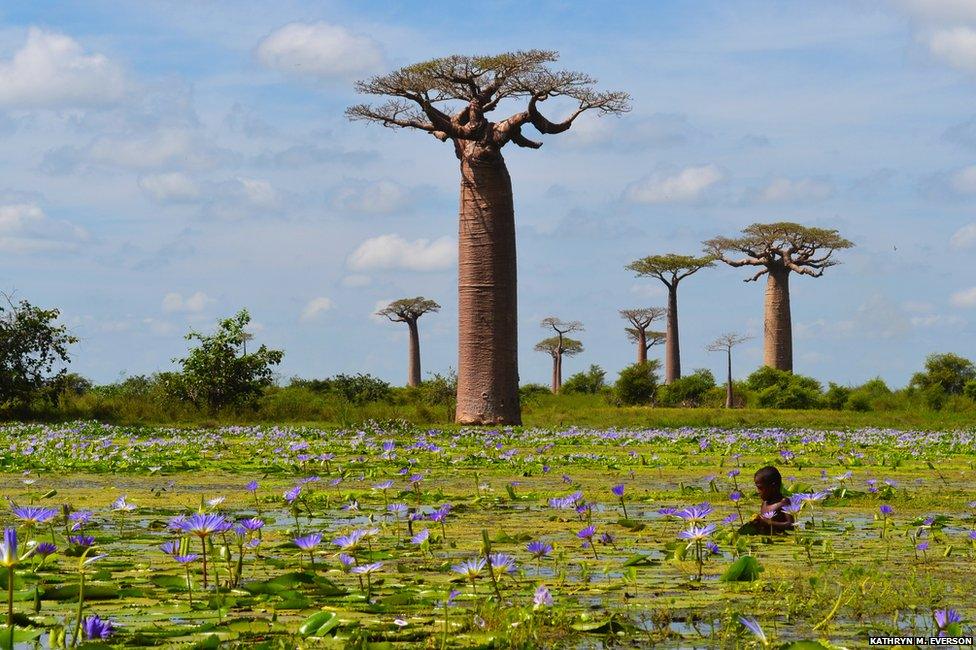
In western Madagascar, a child collects fallen fruit of baobab trees from a stand of shallow water filled with lilies. This image was highly commended by the judges. (Photo: Kathryn M. Everson)
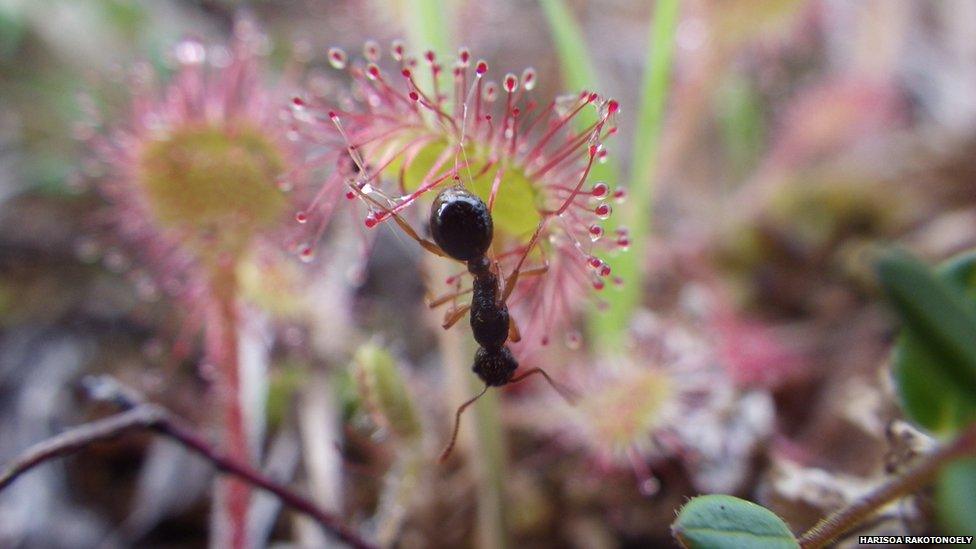
This shot, also highly commended, shows an ant tangled up in the sticky tentacles of Drosera rotundifolia, a carnivorous plant that is widespread in the wetlands of Japan. (Photo: Harisoa Rakotonoely)
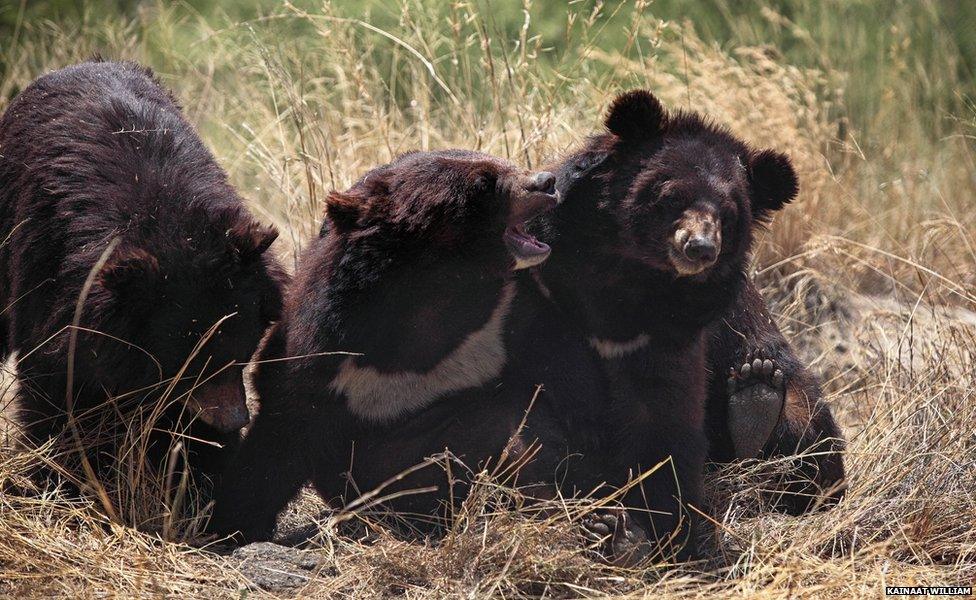
The judges highly commended this photo for revealing the beauty of a "playful and socially positive interaction" between three Asiatic black bears, enjoying winter sunshine in Pakistan (Photo: Kainaat William)

This graphic won the category for theoretical ecology and models; it shows the range occupied by a Californian condor in three dimensions, based on high-resolution GPS tracking data. The condor is most commonly found in the red regions, and less frequently in white regions. (Image: James K. Sheppard)
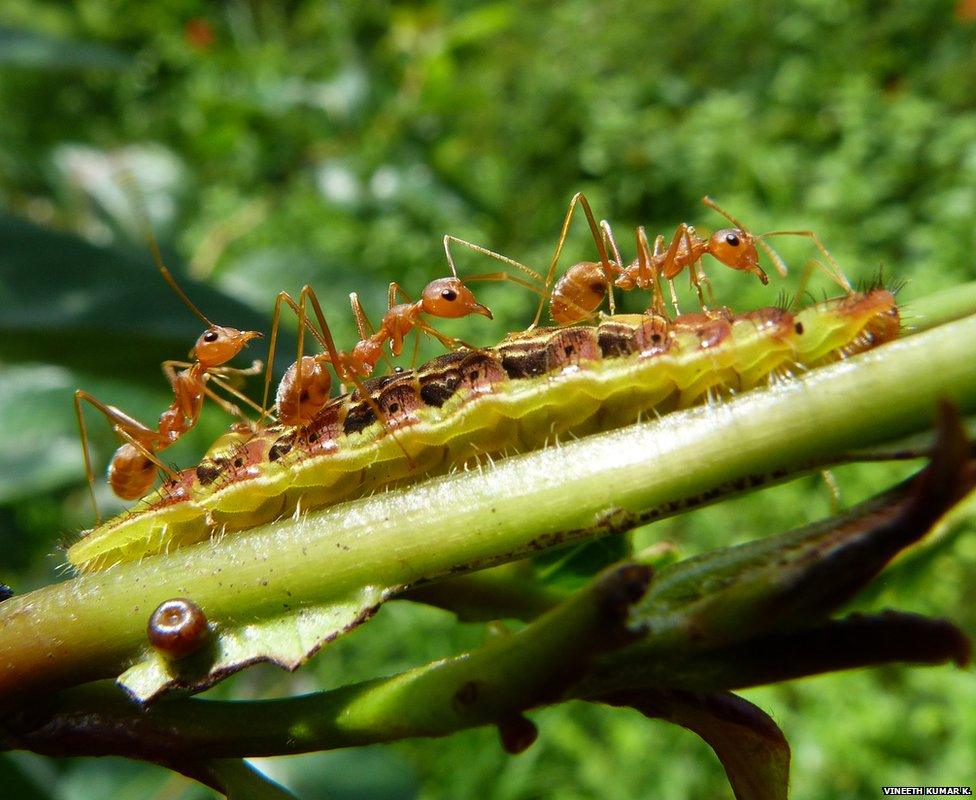
This highly commended photo depicts the symbiotic relationship between weaver ants and a caterpillar. The ants protect the caterpillar from predators; in return the caterpillar's glands produce a sugary substance which the ants swarm all over it to collect. (Photo: Vineeth Kumar K.)
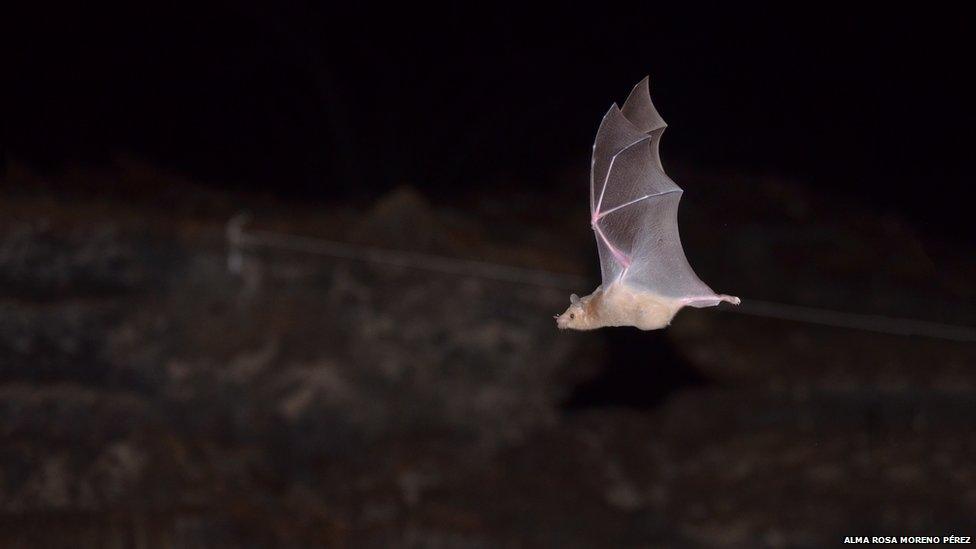
This female bat carried her baby some 700 miles to a "maternity cave" in Mexico's Great Altar Desert, where she joined more than 100,000 other females to give birth. (Photo: Alma Rosa Moreno Perez)
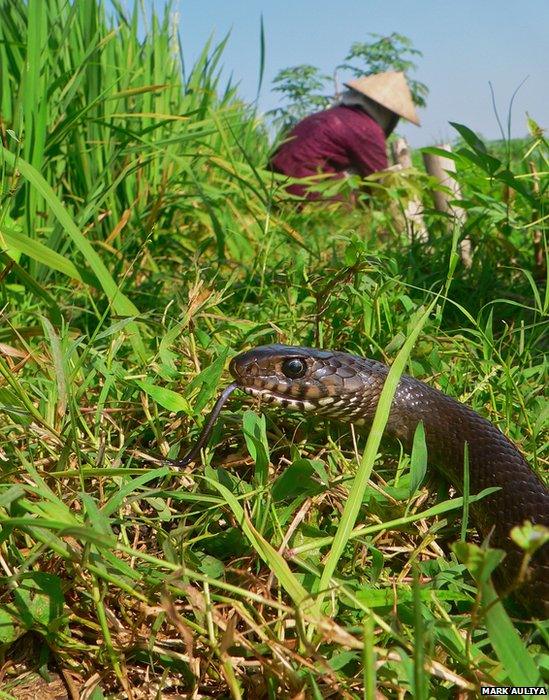
This photo, also highly commended, shows an Oriental rat snake near a paddy field worker in Indonesia. The snake mainly eats frogs and rodents, and is intensively hunted for its skin. (Photo: Mark Auliya)
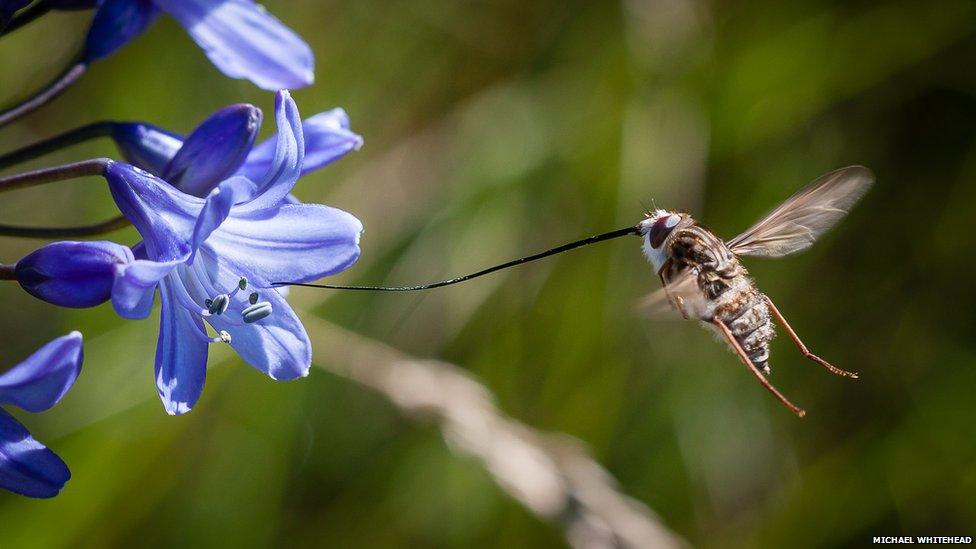
South Africa's long-tongue fly has a proboscis that can stretch to 5cm in length. This commended photo shows the fly, which is a keystone pollinator, drinking from an Agapanthus flower. (Photo: Michael Whitehead)
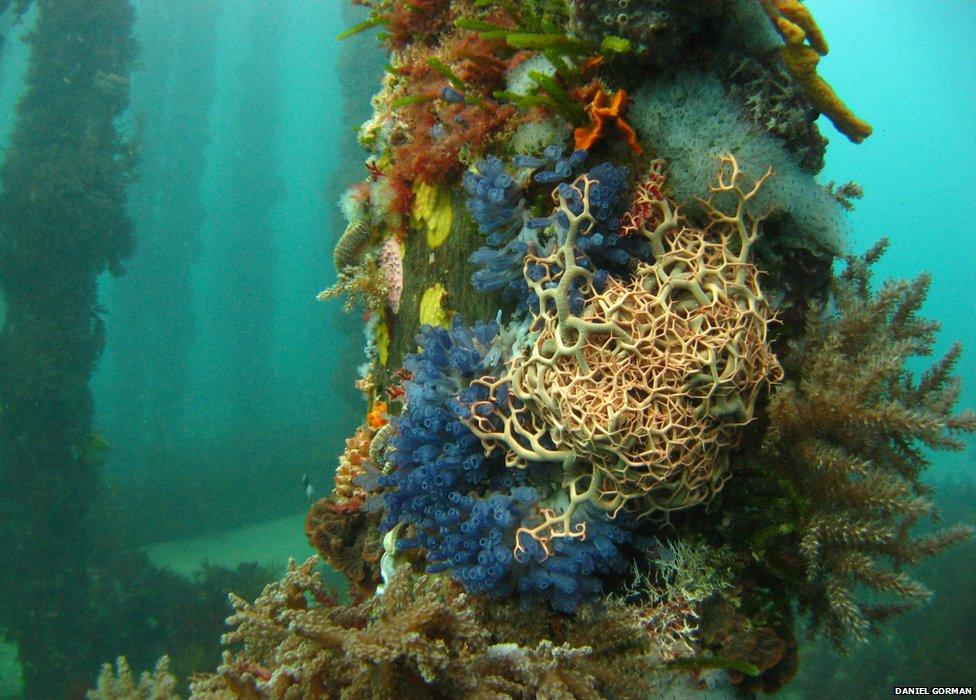
This photo of "South Australia's secret gardens" was also highly commended. On a pillar beneath the Stenhouse Bay jetty, a fragile basket star sits alongside blue ascidians, sponges and brown and red algae. (Photo: Daniel Gorman)
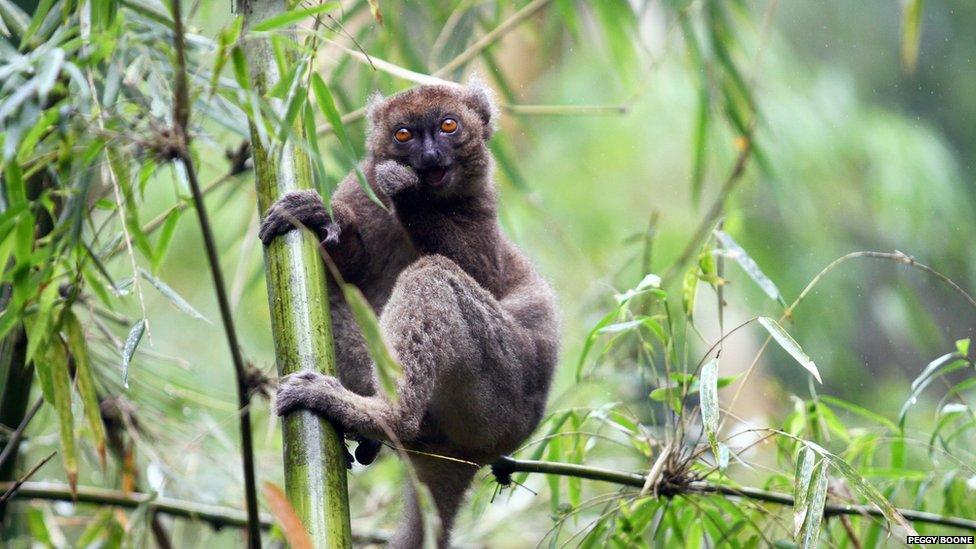
On average, the greater bamboo lemur consumes ten times the amount of cyanide that would be lethal to other mammals of its size. The toxin is found in the critically endangered lemur's main food source, Madagascan giant bamboo; how the animal safely swallows it is not yet understood. The judges highly commended this shot of a lemur munching on a toxic tidbit. (Photo: Peggy Boone)
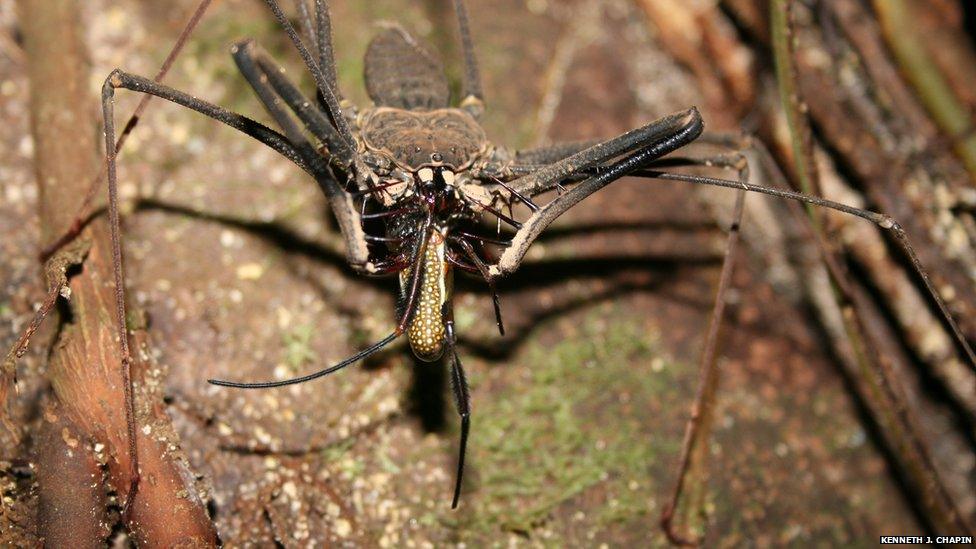
Another highly commended photo captures the first example of an amblypygi - a distant relative of spiders and scorpions - eating a spider. This critter is bigger than a human hand and is gorging itself on a giant golden silk orb-weaver. It was snapped in Yasuni National Park, Ecuador, known as the most biodiverse place on land. (Photo: Kenneth J. Chapin)

Noddy terns are known for their bobbing courtship dances. This highly commended photo shows a parent its chick, which is the result of a rare second round of breeding for the season, after storms brought down many nests. They are standing guard over their nest on Heron Island in the Great Barrier Reef, Australia. (Photo: Michelle Achlatis)
- Published30 August 2014